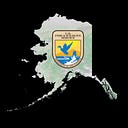All The Fish
Tips for Kid-Friendly Winter Fishing
get the most out of your winter
Looking for a way to beat the winter blues and teach a young person important life skills? Try ice fishing. You’ll learn about fish and lakes, gain patience, get outside, and maybe even get some clean healthy meals out of it.
Keeping kids entertained and happy on the ice
Keep them warm.
Bring layers and an extra change of clothes. Depending on the temperature, the area around your ice hole will tend to have a little water around it. If kids are kneeling on the ice or handling a lot of fish they’re potentially going to get wet.
Once you get cold, it’s hard to warm back up unless you have a shelter with a heater. If you plan to stay out for a longer day, a shack and heater might be a good investment for you. There are many types of shelters available at sporting goods stores or you can DIY. For an extra special treat, bring hot chocolate or warm soup in an insulated container and pull it out half way through the excursion.
Bring snacks.
Your body burns more calories in response to cold. The best time for your favorite snack is when there is a lull in the action.
Give them a job.
Keeping the holes clear of ice is an important job. It keeps your line from freezing to the side of the hole or getting clumped up with ice. It also lets your bobber move correctly when you have a bite. Especially if you have drilled a lot of holes, the scooper is a great way to keep kids busy and active. Just make sure they know to hold on tight so they’re not sending your scooper to the bottom of the lake.
Catch fish.
It’s the most exciting part. Get to know your local lakes and what fish species are available in each. Our friends over at Alaska Department of Fish and Game have a website to help you figure out what they’ve stocked and when here in Anchorage where there is heavy fishing pressure.
You’ll also want to get familiar with the behavior of fish. Are you looking for fish that are roving around mid-water column like a stocked Chinook or Coho Salmon? Or are you trying to outsmart the hardy Alaska Blackfish that prefers the bottom? Or the ambush specialist, the Northern Pike? Learn about fish behavior (what they eat, when they’re active) to improve your odds of catching.
For stocked salmon, baits that work well include cured eggs, popcorn shrimp, or a little piece of herring if you really want to impress them. Test out different depths by setting your bobber with a string bobber stop.
If you haven’t tried ice fishing before, one way to learn more about it during non-COVID times is organized kids fishing events. Our friends over at the Alaska Department of Fish and Game hosts a number of winter events in Anchorage and surrounding areas (usually in February) including one at Jewel Lake. Hundreds of holes are drilled and gear is available for youth and families that need it.
Cooking your catch
If you’ve caught some stocked Coho or Chinook (usually small like this), the easiest way to prepare them is taking off the head and then removing the guts by making a small incision from the anal fin to the area where the head is removed. Simply pull the guts out and use the back of your fingernail or small spoon to remove the kidney (the dark stuff along the spine that you can see once all the guts are removed).
You can season and bake the cleaned fish whole. When the meat is flaky, it’s done, and the spine and ribs will pull out easy in one piece. The skin is fine to eat too!
Listen to our new podcast “Fish of the Week!” to learn more about #AllTheFish.
Compiled by Katrina Liebich, Digital Media Manager for the U.S. Fish and Wildlife Service’s Alaska External Affairs and conversations during Episode 4 of Fish of the Week: Coho Salmon.
In Alaska we are shared stewards of world renowned natural resources and our nation’s last true wild places. Our hope is that each generation has the opportunity to live with, live from, discover and enjoy the wildness of this awe-inspiring land and the people who love and depend on it.
As the Service reflects on 150 years of fisheries conservation, we honor, thank, and celebrate the whole community — individuals, Tribes, the State of Alaska, sister agencies, fish enthusiasts, scientists, and others — who have elevated our understanding and love, as people and professionals, of all the fish.
Follow us: Facebook Twitter fws.gov/alaska/
